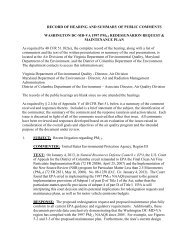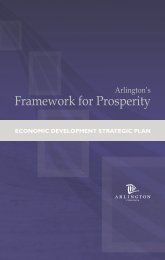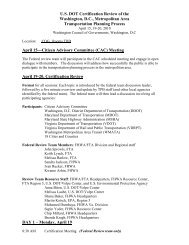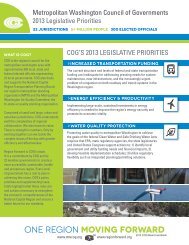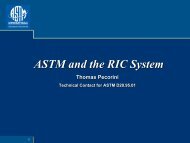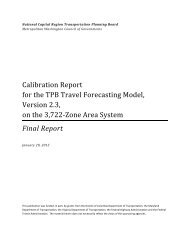PTI Local Government Energy Assurance Guidelines - Metropolitan ...
PTI Local Government Energy Assurance Guidelines - Metropolitan ...
PTI Local Government Energy Assurance Guidelines - Metropolitan ...
You also want an ePaper? Increase the reach of your titles
YUMPU automatically turns print PDFs into web optimized ePapers that Google loves.
<strong>Local</strong> Voices<br />
The Salvation Army<br />
The Salvation Army continues to work closely with Federal, State, and local authorities to assist in<br />
responding to natural and man-made disasters wherever and whenever they occur. In the last few years<br />
alone, the Salvation Army has provided onsite support during major emergency situations including the<br />
Virginia Tech shootings, the Minnesota bridge collapse, the southern California wildfires, and the Midwest<br />
floods. These are just a few examples of the dozens of emergencies to which the Salvation Army responds<br />
each and every year.<br />
Source: http://www.salvationarmyusa.org/usn/www_usn_2.nsf/vw-text-dynamic-arrays/190F4B74F5ED5E81852<br />
574B70000119F?openDocument.<br />
Key Questions<br />
…in Developing Partnerships<br />
1. Are there any mutual aid agreements in place or are there joint powers agreements with<br />
other local governments that are triggered by an energy emergency, and what are the current<br />
responsibilities under these legal agreements? Should they be updated as part of the local EAP?<br />
2. Are new mutual aid agreements needed, and if so, in what areas?<br />
3. Who are the key (internal) local government energy assurance partners, and why?<br />
4. Who are the key State energy assurance partners, and why?<br />
5. Who are the key Federal energy assurance partners, and why?<br />
6. Who are the key regional government organization partners, and why?<br />
7. Where should the energy assurance partners list be kept, in what format, and who is primarily<br />
responsible for keeping (and updating) it?<br />
8. How often should our energy assurance partners list be updated?<br />
9. What is the best way to divide the labor associated with contacting and interacting with the key<br />
local, regional, State, and Federal government energy assurance partners?<br />
10. With respect to pre-event preparedness, who are the most important government partners, and<br />
why?<br />
11. Have all relevant local and national NGO partners been located and contacted?<br />
3.11 Step Ten: Update the Plan on a Consistent Basis<br />
3.11.1 Incorporate Lessons Learned<br />
The local EAP is a living document requiring regular updates and adjustments. To ensure that it remains relevant in<br />
response to new data and lessons learned, the EAP should be revisited frequently and evaluated for its effectiveness.<br />
Incorporating any lessons learned since the energy assurance efforts began is much easier to achieve as part of a<br />
formal update to the EAP.<br />
<strong>Local</strong> <strong>Government</strong> <strong>Energy</strong> <strong>Assurance</strong> <strong>Guidelines</strong> – Version 2.0 | 71



